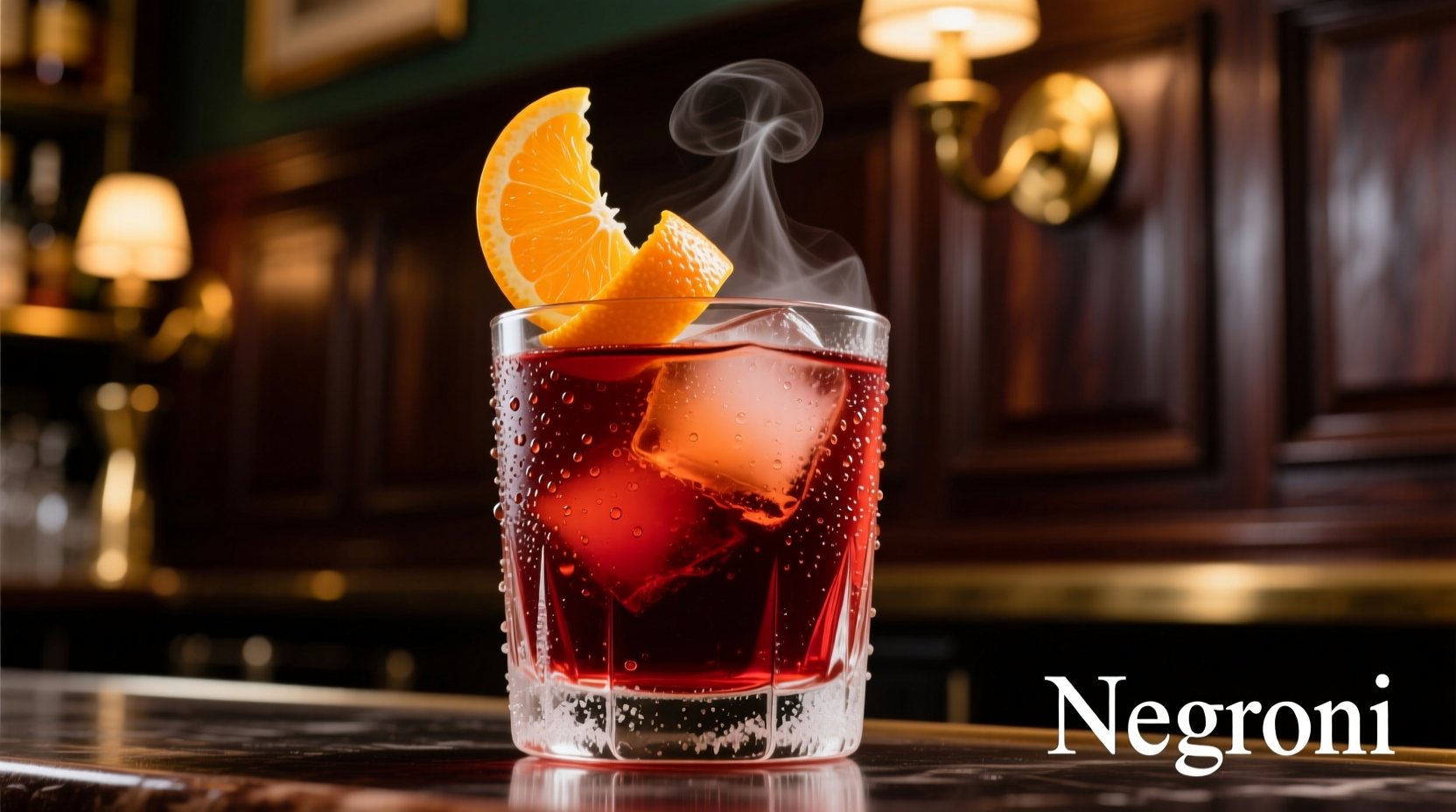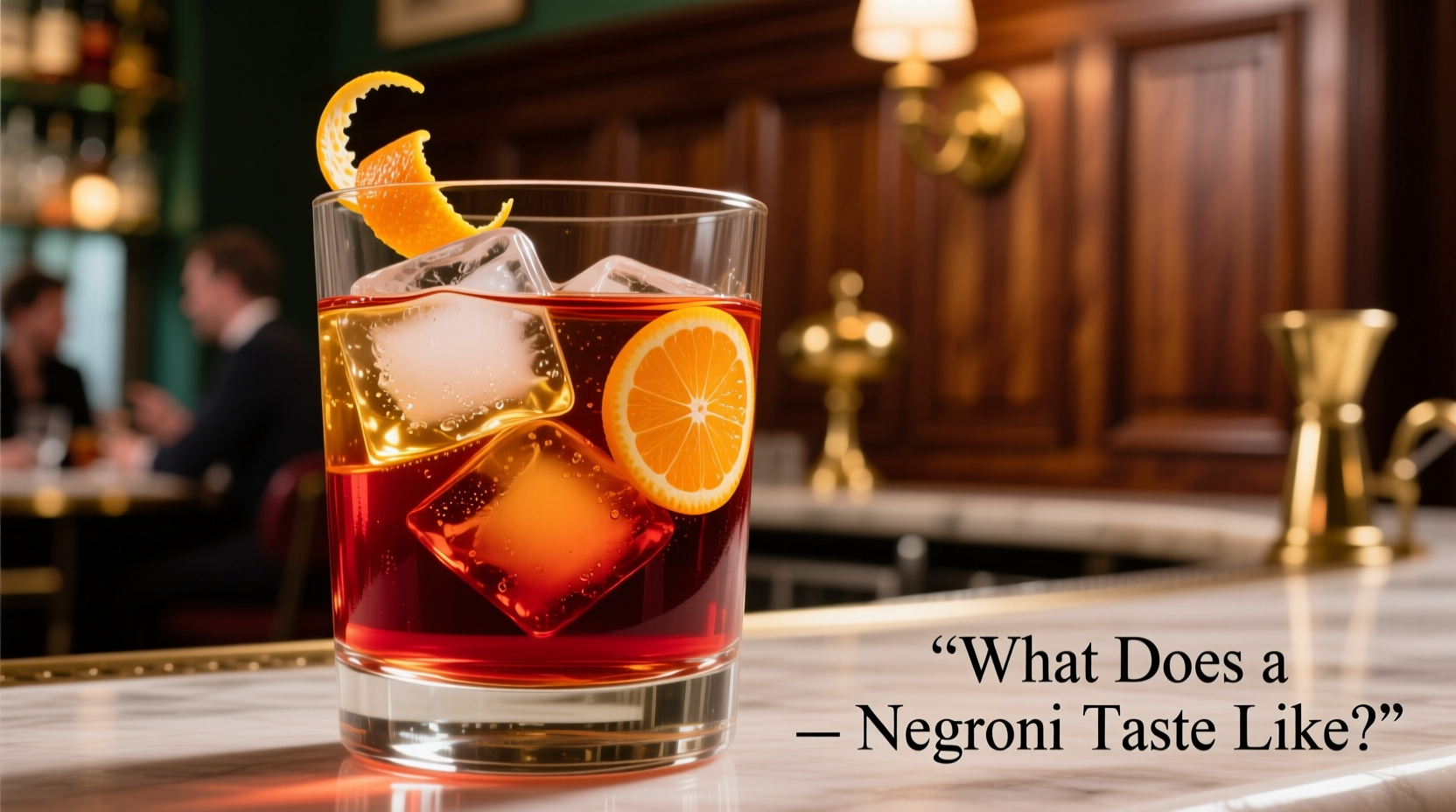If you've ever wondered what does a negroni taste like before ordering one at a bar, you're not alone. This iconic Italian cocktail has gained global popularity, yet its distinctive flavor profile can be intimidating for first-time drinkers. Understanding exactly what is the flavor profile of a negroni helps set proper expectations and enhances your appreciation of this classic drink.
Your First Sip: The Immediate Sensory Experience
When you take your first sip of a properly made Negroni, you'll immediately notice a pronounced but not overwhelming bitterness. This comes primarily from Campari, the bright red Italian liqueur that forms one-third of the cocktail's foundation. Unlike harsh bitterness, a well-balanced Negroni presents a pleasant bitter-sweet complexity that sophisticated palates describe as 'refreshing' rather than off-putting.
The initial aroma offers citrus notes—primarily orange peel—with underlying herbal complexity. As the liquid touches your tongue, you'll detect the juniper-forward profile of gin complementing the bitter base, while sweet vermouth provides a subtle counterbalance that prevents the bitterness from dominating.
Breaking Down the Flavor Components
To fully understand what does a negroni taste like, we need to examine how its three equal parts work together:
| Ingredient | Flavor Contribution | Key Sensory Notes |
|---|---|---|
| Campari | Bitter foundation | Chinotto orange, rhubarb, gentian root, with herbal complexity |
| Sweet Vermouth | Herbal sweetness | Vanilla, caramel, spice notes that balance bitterness |
| Gin | Botanical structure | Juniper, citrus peel, coriander that adds depth |
This flavor breakdown explains why is a negroni bitter or sweet isn't a simple question—the answer is both, in perfect equilibrium. The bitterness registers first (thanks to Campari's distinctive profile), but quickly gives way to the herbal sweetness of the vermouth, with the gin providing structural support throughout.

The Tasting Journey: From First Sip to Finish
A Negroni's flavor evolves as you drink it, creating a multi-stage tasting experience:
- 0-5 seconds: Immediate bitter-orange aroma followed by pronounced but balanced bitterness
- 5-15 seconds: Sweet vermouth's vanilla and caramel notes emerge, softening the initial bitterness
- 15-30 seconds: Gin's botanicals become more apparent—juniper, citrus, and spice notes develop
- 30+ seconds: Clean finish with lingering bitter-orange aftertaste that invites another sip
This progression explains why many cocktail enthusiasts describe the Negroni as having "layers" of flavor. The melting ice also gradually dilutes the cocktail, subtly changing the flavor profile as you drink—something professional bartender Antonio Rodriguez confirms through his experience with flavor chemistry: "The dilution factor is crucial in a Negroni. As the ice melts, it slightly softens the bitterness while allowing more subtle herbal notes to emerge, creating a dynamic drinking experience."
How It Compares to Similar Cocktails
Understanding negroni cocktail taste description becomes clearer when comparing it to related drinks:
- Americano: Substitutes soda water for gin, resulting in a lighter, less complex drink with more pronounced bitterness
- Boulevardier: Replaces gin with bourbon, creating a richer, sweeter profile with whiskey notes
- Manhattan: Uses whiskey and sweet vermouth without Campari, lacking the distinctive bitter element
These comparisons help explain why the Negroni occupies a unique space in cocktail culture—it's the perfect balance point between bitter and sweet that makes it both challenging and approachable.
Factors That Influence Negroni Flavor
Several elements affect how would you describe a negroni:
- Ingredient quality: Premium gin and vermouth create a smoother profile than budget options
- Ratios: While classic is 1:1:1, some prefer 2:1:1 (gin:vermouth:Campari) for less bitterness
- Stirring time: Proper dilution (25-30 seconds) balances the flavors optimally
- Garnish: An expressed orange twist adds citrus oil that complements the bitterness
According to cocktail historians, the standard Negroni recipe has remained remarkably consistent since its creation in early 20th century Florence. The Difford's Guide, a respected cocktail resource since 1998, confirms the enduring 1:1:1 ratio as the authentic preparation method that delivers the intended flavor balance.
Who Will Enjoy a Negroni (And Who Might Not)
Your enjoyment of a Negroni largely depends on your existing flavor preferences:
- You'll likely enjoy it if: You appreciate bitter greens (arugula, radicchio), dark chocolate, or hoppy beers
- You might find it challenging if: You prefer exclusively sweet cocktails or have heightened sensitivity to bitter compounds
- First-timer tip: Try it on the rocks rather than straight up—the melting ice provides gradual dilution that softens the initial bitterness
Many people report that Negronis grow on them with repeated tasting. The negroni first time tasting experience often involves initial surprise at the bitterness, followed by appreciation of the complexity after 2-3 sips. This phenomenon aligns with research from the Monell Chemical Senses Center showing that humans can develop preferences for initially aversive flavors through repeated, moderate exposure.
Food Pairing Suggestions
The Negroni's bitter-sweet profile makes it remarkably versatile with food:
- Classic Italian: Charcuterie, aged cheeses, and tomato-based pasta dishes
- Surprising pairings: Dark chocolate desserts and spicy Asian cuisine
- Aperitif tradition: Served before meals to stimulate the appetite (as intended in its native Italy)
Understanding negroni vs campari soda taste difference helps explain why the full cocktail works so well as an aperitif—the added complexity from gin and vermouth creates a more rounded flavor experience that prepares the palate for food better than Campari soda alone.
Adjusting for Your Palate
If the standard Negroni seems too bitter initially, consider these adjustments while maintaining authenticity:
- Try a 2:1:1 ratio (more gin, less Campari) for a gentler introduction
- Use a lighter-style gin (like Tanqueray or Bombay Sapphire) rather than heavily juniper-forward options
- Opt for a premium sweet vermouth (Carpano Antica or Dolin Rouge) for richer sweetness
- Ensure proper dilution by stirring 25-30 seconds before serving
Remember that the bitterness is meant to be present—it's what makes the Negroni distinctive. As your palate adapts, you may find yourself preferring the classic 1:1:1 ratio that cocktail enthusiasts worldwide recognize as the authentic what does campari taste like in a negroni experience.











 浙公网安备
33010002000092号
浙公网安备
33010002000092号 浙B2-20120091-4
浙B2-20120091-4